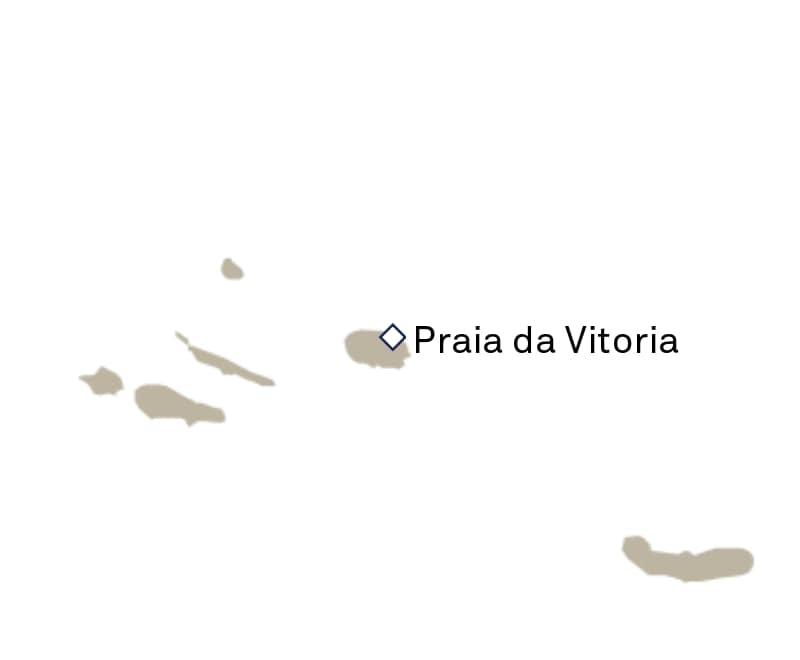Praia da Vitoria, Azores, Portugal cruises

Portuguese navigators discovered the first of the Azores in 1432, although 2,000 Flemish settlers were among its early immigrants, and their influence can still be seen in the windmills that dot the landscape on some islands. Praia de Vitoria is located on Terceira, an island whose name means “third” in reference to the order in which it was discovered.
Much of the focus here rightly falls on the UNESCO World Heritage Site, Angra do Heroismo, the islands’ oldest city. Within it stands the Sao Joao Baptista Castle, built at the end of the sixteenth century and surrounded by three miles of walls. The Angra do Heroismo Museum, occupying a former convent, tells the story of the city and the island, together with a collection of arms, maps and art. The twin-towered cathedral is another of the town’s most emblematic sights. Overlooking it all is the Monte Brasil, a popular picnic spot with hiking trails that offer fabulous views.
Keep an eye out for the “imperios,” a local term for the chapels that are dotted all over the island. Dedicated to the cult of the Holy Spirit, many of them feature eye-catching and ornate façades.
The Azores were born through ancient volcanic eruptions and, if measured from the base of the ocean floor to the tops of their peaks, the islands actually rank among the tallest mountains on earth. They’re graced by laurel forests, lakes, sheer cliffs etched with waterfalls and beach-fringed shores. With this comes a mild year-round climate, unusually so for such a northern location.
The island of Terceira itself has a number of specific natural wonders formed by these volcanoes such as the huge Caldeira de Guilherme Moniz crater, almost two miles across, vast underground caverns and fumarole fields where steam hisses from the ground.
These volcanic origins have created fertile terrain too. You’ll find the Azorean variety of pineapple used here in jams and desserts, as well as in local liquors, which are also flavored with passion fruit, blackberry or tangerine. The islands have their own tea plantations too and you may stop somewhere to sample a local brew. The Wine Museum in Biscoitos explores Terceira’s long wine growing tradition. The island’s producers have chosen the same Verdelho grapes used in Madeira wine and, curiously enough, the local variety became a favorite with the Russian Court in the nineteenth century.
In addition to all the delights inland, the waters around the Azores provide many recreational options too, such as whale-watching, blue marlin fishing, surfing and diving.